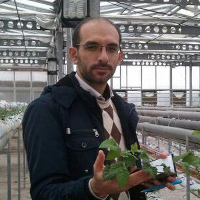Optimizing Epicotyl Technique on Walnut grafting Using Different Grafting Methods and Covering Material at Graft location by Using Chandler Scion
Persian walnut (Juglans regia L.) is one of the most important nut fruit of the world with high nutritional value. In order to produce a product with national standards, a step must be taken toward grafting walnut seedlings with a specified cultivar. On the other hand, lack of suitable cultivars and ascending demand on grafted walnut seedlings will require a high production rate with short period supply. The epicotyl grafting is the fastest method of producing grafted seedlings in the propagation of some fruit trees such as walnut. In this method, the grafted, despite its high efficiency, results in high losses when the seedlings are transferred out of the greenhouse. The experiment was performed due to increase the survival rate of chandler grafted seedlings by using two types of cleft and omega cutting type, along with three types of moisture covers including: perlite, cocopeat, and sawdust. The results showed that cleft cutting with an average graft success of 72.21%, performed better than omega cutting (8.33%) in epicotyl grafting. Perlite (93.32%) and sawdust (73.32%) had the highest graft success. Cocopeat by 50% of graft success caused root decay due to excessive moisture retention. The highest length of new growth branches with an average of 7.32 cm and a diameter of 3.93 mm was recorded 100 days after grafting in cleft grafting by perlite cover treatment.
-
Effect of preharvest foliar spraying of calcium and potassium compounds on the shelf life of thornless blackberry
Ehsan Alinezhad, *, Kamran Ghasemi, Morteza Soleimani Aghdam
Plant Production, -
Genetic diversity of some thornless blackberry genotypes using ISSR molecular markers
Kulsum Shiri, *, Hossein Moradi
Journal of Plant Molecular Breeding, Winter and Spring 2024


